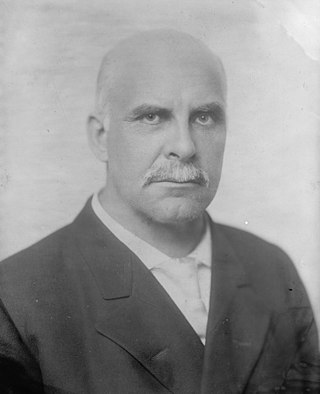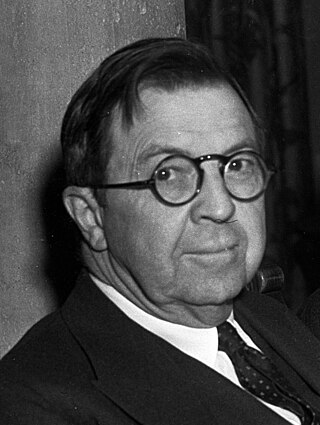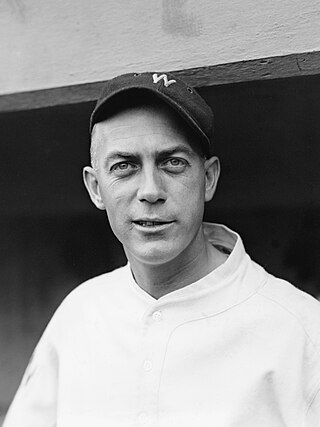Related Research Articles

The Big Pond is a 1930 American pre-Code romantic comedy film based on a 1928 play of the same name by George Middleton and A. E. Thomas. The film was written by Garrett Fort, Robert Presnell Sr. and Preston Sturges, who provided the dialogue in his first Hollywood assignment, and was directed by Hobart Henley. The film stars Maurice Chevalier and Claudette Colbert, and features George Barbier, Marion Ballou, and Andrée Corday, and was released by Paramount Pictures.

Gene Eliza Tierney was an American film and stage actress. Acclaimed for her great beauty, she became established as a leading lady. She was best known for her portrayal of the title character in the film Laura (1944), and was nominated for an Academy Award for Best Actress for her performance as Ellen Berent Harland in Leave Her to Heaven (1945).

William Desmond Taylor was an Anglo-Irish-American film director and actor. A popular figure in the growing Hollywood motion picture colony of the 1910s and early 1920s, Taylor directed fifty-nine silent films between 1914 and 1922 and acted in twenty-seven between 1913 and 1915.

This Side of Paradise is the debut novel by American writer F. Scott Fitzgerald, published in 1920. It examines the lives and morality of carefree American youth at the dawn of the Jazz Age. Its protagonist, Amory Blaine, is an attractive middle-class student at Princeton University who dabbles in literature and engages in a series of romances with flappers. The novel explores the theme of love warped by greed and status-seeking, and takes its title from a line of Rupert Brooke's poem Tiare Tahiti.

Marie Adelaide Elizabeth Rayner Lowndes, who wrote as Marie Belloc Lowndes, was a prolific English novelist, and sister of author Hilaire Belloc.

Eugene Wilder Chafin was an American politician and writer who served as the Prohibition Party's presidential candidate during the 1908 and 1912 presidential elections. He was active in local politics in Wisconsin, statewide elections in Wisconsin, Illinois, and Arizona, and campaigned throughout the United States and the world in favor of the prohibition of alcohol.

Francis Hopkinson Smith was an American author, artist and engineer. He built the foundation for the Statue of Liberty, wrote many stories and received awards for his paintings.

Rupert Raleigh Hughes was an American novelist, film director, Oscar-nominated screenwriter, military officer, and music composer. He was the brother of Howard R. Hughes Sr. and uncle of billionaire Howard R. Hughes Jr. His three-volume scholarly biography of George Washington broke new ground in demythologizing Washington and was well received by historians. A staunch anti-Communist, in the 1940s he served as president of the American Writers Association, a group of anti-Communist writers.

Charles Meredith was an American stage, film, and television actor, who also directed plays and taught in college drama departments. His screen career came in two widely separated phases: as a leading man for silent films in the early 1920s, and as a character actor for films and television from 1947 through 1964. He was a series regular on television shows Rocky Jones, Space Ranger and The Court of Last Resort.

George Anthony Mogridge was an American professional baseball pitcher. He played in Major League Baseball for the Chicago White Sox (1911–12), New York Yankees (1915–20), Washington Senators (1921–25), St. Louis Browns (1925), and Boston Braves (1926–27). Mogridge threw the first no-hitter for the Yankees franchise in 1917 and was a member of the 1924 World Series champions with the Senators.

Herman Bernstein was an American journalist, poet, novelist, playwright, translator, Jewish activist, and diplomat. He was the United States Ambassador to Albania and was the founder of Der Tog, the Jewish daily newspaper.

Francis Scott Key Fitzgerald was an American novelist, essayist, and short story writer. He is best known for his novels depicting the flamboyance and excess of the Jazz Age—a term he popularized in his short story collection Tales of the Jazz Age. During his lifetime, he published four novels, four story collections, and 164 short stories. Although he achieved temporary popular success and fortune in the 1920s, Fitzgerald received critical acclaim only after his death and is now widely regarded as one of the greatest American writers of the 20th century.

Bradley Barker was an American actor and film director of the silent era. He also created sound effects for film and radio.

William Bayard Hale was an American journalist. He wrote the 1912 campaign biography of Woodrow Wilson. Later, after souring on Wilson, he wrote a derisive critique of Wilson's literary style.

Max Bendix was an American concert violinist, conductor, and teacher. He was the first concertmaster of the Chicago Symphony Orchestra and was also the concertmaster of the Metropolitan Opera orchestra. Bendix wrote several works for orchestra and some incidental music as well as songs. In 1899, the Musical Courier called Bendix "the finest American violinist".

Anna Elizabeth, Countess de Brémont was an American journalist, novelist, poet and singer. She spent much of her life in England. A period in South Africa provided the material for some of her books.

Martha Ellicott Tyson was an Elder of the Quaker Meeting in Baltimore, an anti-slavery and women's rights advocate, historian, and a co-founder of Swarthmore College. She was married to Nathan Tyson, a merchant whose father was the emancipator and abolitionist Elisha Tyson. She was the great-great grandmother of Maryland state senator James A. Clark Jr. (1918–2006). She was inducted into the Maryland Women's Hall of Fame in 1988.

Helen Sherman Griffith was an American author. An Iowan, she was the "prolific" author of the Letty Grey series of children's books, published by Penn Publishing Company of Philadelphia. She was the daughter of Hoyt Sherman and Sara Sherman, who was born and raised in Des Moines, Iowa at Hoyt Sherman Place. Helen's bedroom has been restored and is part of the Hoyt Sherman Place house museum.

Lily May Futrelle was an American writer.

This is a list of known on-screen appearances made by Joe Martin (orangutan), a film star of the 1910s and 1920s.
References
- ↑ Good Housekeeping Magazine. Phelps Publishing Company. 1914. p. 405. Retrieved November 27, 2021– via Google Books.
- 1 2 "New York As Seen By Two Novelists". The New York Times. September 19, 1915. Retrieved December 25, 2021– via Newspapers.com.
- 1 2 Cowles Le Cron, Helen (October 30, 1915). "Current Fiction". The Des Moines Register. Retrieved December 25, 2021– via Newspapers.com.
- ↑ Mentor Association (New York, N.Y.) (1920). The Mentor. Mentor Association. p. 9-PP10. Retrieved November 27, 2021– via Google Books.
- 1 2 "Publishers Weekly". Children's Starred Reviews Annual (v. 89). R.R. Bowker Company: 268. 1916. ISSN 0000-0019 . Retrieved November 27, 2021– via Google Books.
- ↑ "Powerful Film Is Big Attraction At Loew's This Week". Press-Telegram. January 15, 1921. Retrieved December 25, 2021– via Newspapers.com.
- ↑ "Felix O'Day (1920)". AFI. Retrieved November 27, 2021.